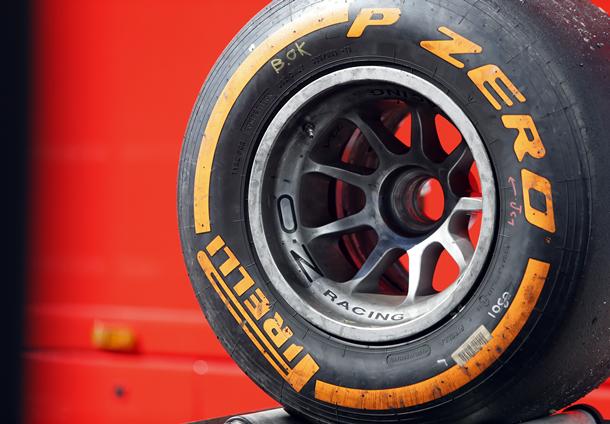The 2013 GP2 season – which takes in 11 rounds this year – gets underway in Sepang over the weekend, with Pirelli entering its third year as tyre supplier to Formula One’s main feeder series.
The first two races of the year in Malaysia are also the toughest, with the P Zero Orange hard tyre and P Zero Yellow soft tyre nominated for the weekend, which is characterised by extreme humidity and also the risk of monsoon-like downpours. The track surface at Sepang is abrasive and very high energy loads are put through the tyres, making it extremely demanding both in terms of wear and degradation.
Pirelli’s racing manager Mario Isola said: “We’ve changed the compounds and the construction of the GP2 tyres this year to reflect the characteristics of our new Formula One tyres, which offer more performance and deliberately increased degradation. There is also a bigger performance gap between the GP2 compounds, which opens up more possibilities for strategy. This not only adds to the spectacle of the races and encourages overtaking, but it also helps the drivers to learn more about tyre management: an essential skill at the very top of the sport, where all the GP2 drivers want to end up.
“Malaysia has the second-highest lateral energy loading of the year on the GP2 tyres after Barcelona, so this weekend will be a real test for all the cars and drivers; especially as it is likely to rain at some point. For the first time we see orange as a colour marking on the hard tyre, which again is similar to what we use in Formula One. Unlike Formula One though, there is just one pattern of full wet tyre for GP2, which carries blue markings. The start of the GP2 season is always very exciting, with the next generation of young drivers eager to graduate to prove themselves, so we are definitely in for an action-packed weekend.”
The challenge for the tyres:
• With a GP2 car only about 10 seconds per lap slower than a Formula One car in Malaysia, the demands on the tyres are extremely similar. However, the compound and structure of the GP2 tyres is specifically geared towards the category, uniquely tailored to match the car’s power and downforce characteristics.
• The most demanding section of the Sepang circuit is turns five to seven and turns 12 to 13, which put a huge amount of lateral energy through the tyres.
• In case of wet conditions, the challenge for the tyres is simply clearing away the huge amounts of water that can accumulate. The latest Cinturato wet tyres provide more grip, therefore better handling and durability. While the warm ambient temperatures in excess of 30 degrees centigrade ensure that the track can dry out quickly after a shower, drainage at Sepang (which was originally built on a swamp) is not so good. This means that puddles of standing water can still form even when most of the rest of the circuit is drying.
The race and the rules:
• Every car will have five sets of dry tyres and three sets of wet weather tyres available for the GP2 race weekend.
• The five sets of dry tyres comprise three sets of the harder compound (hard) and two sets of the softer compound (soft).
• The drivers can use their tyre allocation in any way they like.
• Race One is run over 170 kilometres or one hour and each driver must complete one compulsory pit stop during which a minimum of two tyres must be changed.
• The grid for Race Two is determined by the finishing order of the first race, with the top eight positions reversed.
• Race Two is run over 120 kilometres or 45 minutes, with no compulsory pit stops.
About Malaysia:
Sepang joined the main GP2 Series last year, having previously formed part of the GP2 Asia Series. The 5.543-kilometre circuit was inaugurated in 1999, as the second Hermann Tilke designed track to join the Formula One calendar after the A1 Ring in Austria and it is also extensively used for motorbike racing. Last year, current GP2 champion Davide Valsecchi set pole in Malaysia, while Luiz Razia won the feature race. The sprint race on Sunday was won by James Calado. The Englishman is competing in GP2 again this year, while Valsecchi has been confirmed as a development driver for Lotus. Of the 125 drivers who have taken part in GP2 over the years, 24 have graduated to Formula One.







